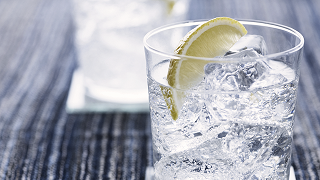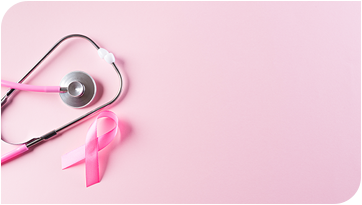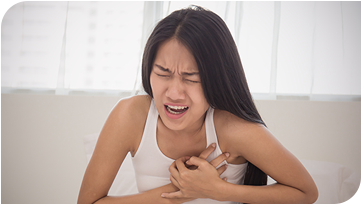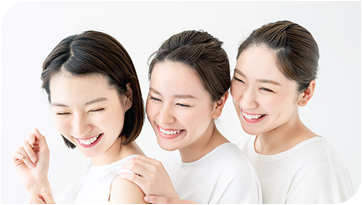Breast stasis disease
This is the first breast "emergency" that most new mothers encounter and experience. It is formed because the milk cannot be discharged or is not discharged smoothly, resulting in the accumulation of milk in the breast. Originally in the lactation period, the secretion and filling of milk in the breast, the breast appears swollen, hard, and even a little pain are normal phenomena, because in the lactation period of nearly a year, any one or several breast ducts are blocked or narrow, which may lead to breast milk siltation.
There are three types of breast milk siltation:
1, normal breast filling: only manifested as a swelling of the breast, sometimes accompanied by dull pain, lump when touched, after breastfeeding or breast pump suction, milk empties, symptoms disappear, this is a normal breast filling phenomenon, not a pathological category.
2, breast milk stasis: if the milk continues to accumulate, the breast expansion continues to increase, so that the breast skin thickens, stiffens, and the pain increases, the result can lead to the nipple can not stand, the baby is difficult to suck, and it is not easy to suck milk.
3, milk duct blockage and inflammation of the breast: when the breast expansion is further aggravated, the breast tissue edema, breast duct stenosis, milk can not be discharged, blood circulation and lymphatic reflux in the breast are blocked, the breast is more swollen, the breast skin is edema, bright, hardened, and then fever, severe pain, if not treated in time, will lead to acute mastitis.
Acute mastitis and breast abscess
Acute mastitis belongs to the "mastitis" referred to by traditional Chinese medicine, which is the most common disease in lactating women, especially in primipara, and often occurs within 3 to 4 weeks after delivery, caused by bacterial infection. When the breastfeeding technique and the baby's sucking are not correct, the nipple can get chapped. Once chapped, bacteria can invade the lymphatic vessels in the breast and the tissue between the milk lobes and cause infection. And the milk deposited in the breast is also a good medium for bacterial reproduction, coupled with the decline in postpartum systemic anti-infection ability, it is easy to lead to mastitis.
In the early stage of acute mastitis, due to the siltation of milk, the breast will have throb pain, the local skin will be slightly red and slightly hot, and the patient will have high fever and chills, etc. If not treated in time, the redness and swelling will be further aggravated, the pain will be more severe, the high fever will not fade away, and the abscess will soon enter the formation stage -- the breast lump and the feeling of fluctuation, and due to the different depth of the lump, the lump into pus stage is inconsistent. There will be a continuous high fever phenomenon in clinical practice. In severe cases, systemic suppurative infection and sepsis may occur. Therefore, acute mastitis must be treated correctly at an early stage.
After the occurrence of acute mastitis, treatment should be carried out under the guidance of a doctor, usually including physical therapy, drug therapy (including Chinese medicine), surgery to open the abscess drainage and drainage. If mastitis occurs on both sides of the breast at the same time and abscesses form, the effect after treatment is not satisfactory, you can consider terminating milk secretion and stopping breastfeeding.
But when it comes to mastitis, prevention is the most important. Since milk stasis is one of the most important causes of acute mastitis, young mothers should learn to breastfeed properly from the beginning to keep their nipples clean and prevent disease.
Eczema mammary
Breast eczema is a kind of allergic inflammatory lesions of the breast skin, often occurring in lactating women, most of them occur simultaneously on both sides, a few are unilateral, and the lesions are located in the nipple, areola, especially the lower part of the breast. In the acute stage, the skin is characterized by miliary papules, skin flushing, punctate exudation and erosion, and sometimes crusts and desquamation. In chronic phase, the skin becomes rough and the nipples are cracked. Whether it is acute or chronic period, there are symptoms of itching and nipple pain, and the breast has a dramatic pain when the baby sucks, and stopping breastfeeding helps to cure. The treatment of breast eczema is the same as the treatment of other parts of eczema. Antihistamine can be taken orally, traditional Chinese medicine can be taken internally, and ointment and herbal liquid can be washed externally. However, taking into account the characteristics of lactation, it is appropriate to apply external ointment such as dermatitis pine and Yuzhuo ointment, and it can also be washed with Chinese herbs, so as not to hinder normal lactation.
Breast trauma
During the "long" lactation period, although the nipple epidermis is rich in toughness, the nipples are prone to chapping or nipple damage when the baby sucks too hard. Whether the nipple is cracked or damaged, the nipple is more or less bleeding or there is light yellow seepage, when the baby sucks, the baby can inhale the blood into the stomach, forming a baby false black stool. At the same time, the cracked and damaged surface may have bacterial invasion and infection, and the oral mucositis may occur when the baby sucks, therefore, the cracked nipple and damage should be paid attention to and timely treatment, so as not to affect the physical and mental health of the mother and child.
In short, all kinds of breast emergencies occur during lactation, both for the mother's own reasons and for the baby, so it is necessary to pay attention to and popularize the education and publicity of breastfeeding, and popularize the prevention and treatment knowledge of breast emergencies.






